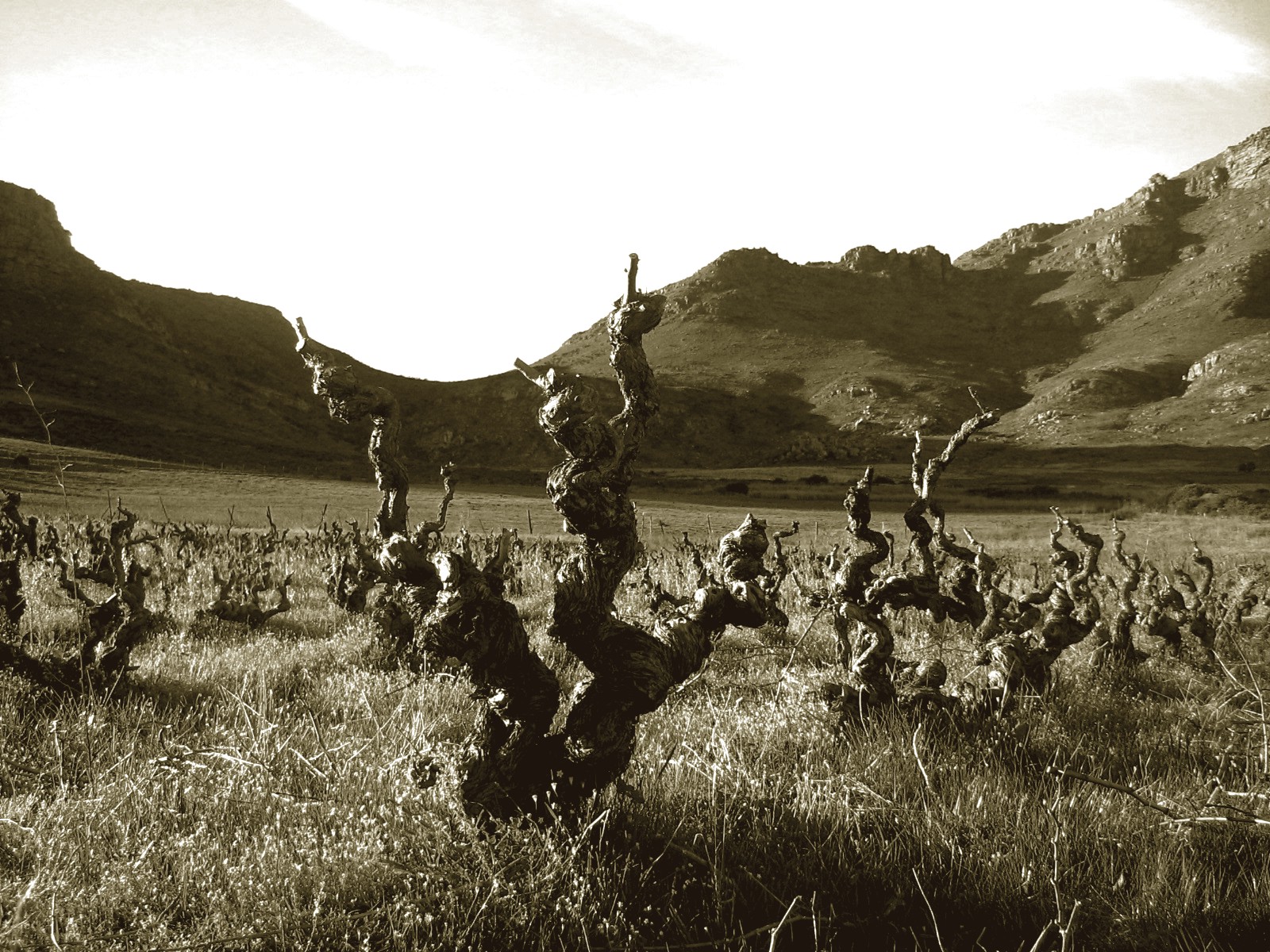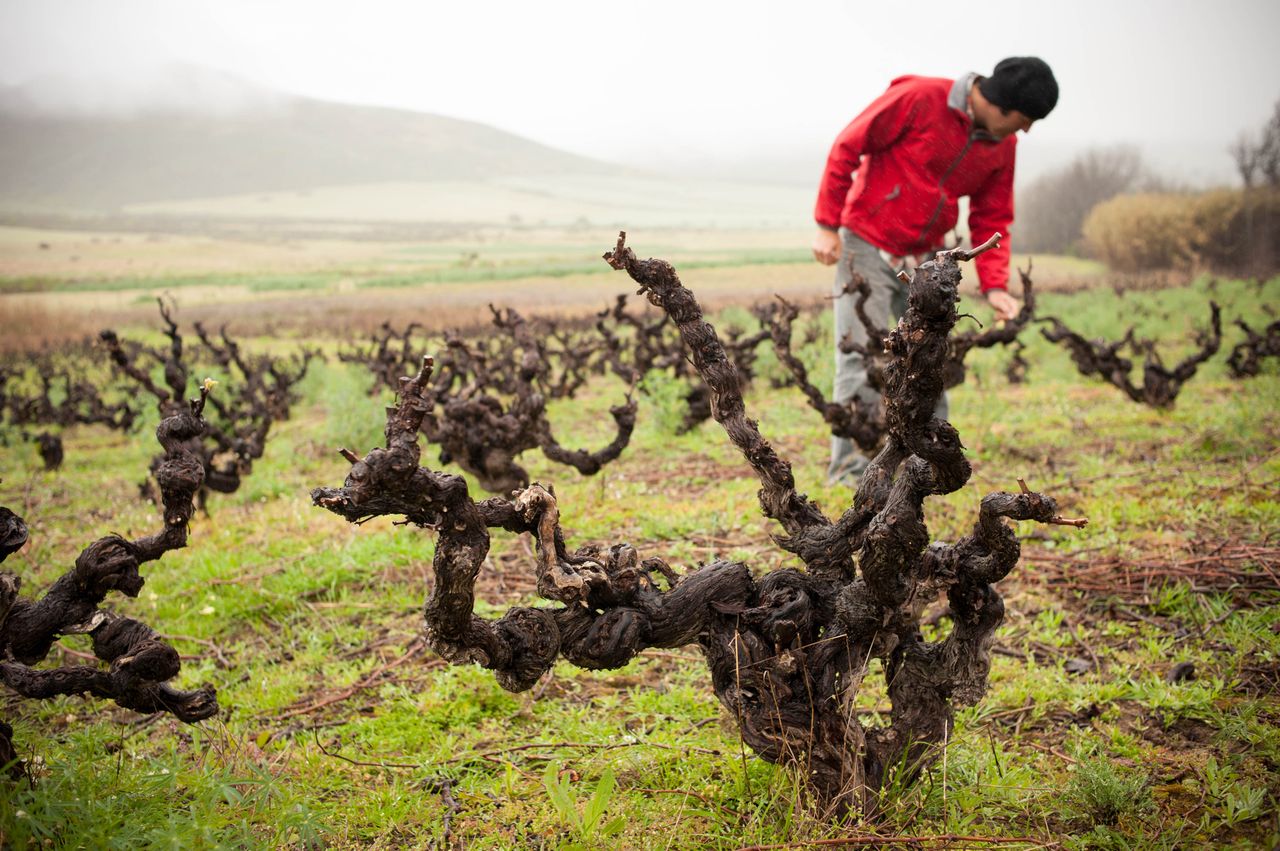
OLD VINES: FAD OR FABLE?
As ‘Old Vines’ is the buzzword in the local industry right now, the judges for the Cape Sommelier Cup were treated to a presentation and tasting of wines made from Old Vines by viticulturist Rosa Kruger and her team.
Rosa Kruger has been the flag bearer for Old Vines for over 12 years. “I travelled extensively in the wine world and started wondering why we were pulling out our vineyards after 15 or 20 years, and the rest of the wine world was keeping theirs.” So Rosa started making a list of the old vineyards as she continued her work as a consultant viticulturist, encouraging the farmers to keep these old vineyards and nudging them towards viable production levels.
Eben Sadie was one of the first winemakers to make a wine from an ancient Semillon vineyard on the Skurfberg up the West Coast on the hills behind Lamberts Bay, and soon others followed suit. Johann Rupert joined the movement early on, as did Adi Badenhorst, the Mullineuxs, and several other pioneering winemakers keen to experiment with these unique vineyards. In general, the vines are predominantly Cinsault, Grenache, Chenin Blanc, Muscat d’Alexandrie, Palomino and Semillon.
But farmers are still ripping out vineyards at a rapid rate, either to plant more popular varietals or to replace them with stone fruit or citrus, which is sadly more lucrative.
Rosa is campaigning hard to get these grapes sold at a premium. Higher prices achieved for these low yielding vineyards in out of the way places have meant farmers can afford to stay on their farms, educate their children and improve conditions for their workers: “That makes it all worthwhile for me,” says Rosa.
But with Rosa passionately beating the ‘old vines’ drum she has managed to muster up some support. Johan Rupert of L’Ormarins has offered to fund the Old Vines Project for the next 2 years, providing money for staff and research. SAWIS has released the list of Old Vines and so the team can get to work identifying these vineyards and encouraging winemakers to vinify these grapes separately and make them into wines that express their unique terroir and heritage.
Currently there are 2700ha of vineyards listed as Old Vines, and while the oldest vineyards are listed as dating from 1900, no records were kept before then, so no-one is sure quite when some of these vines were planted.

So what makes Old Vines wine special? Rosa feels that the age of the vineyard produces wines with a unique complexity, built up over decades: “A vine builds up a memory, and so it adapts to each season from its memory bank. When you walk into an old vineyard, there is leafroll, but it’s never overwhelming; there is never a problem of over-production when the farmer has to jump in and thin the bunches; the vine just seems to know what to do, unlike its younger counterparts. But it needs to be said that these vines have survived because they were good. Somehow, the combination of varietal and terroir have worked together to keep this vineyard alive, when others around them were dying off or being ripped out for marketing purposes.
One theory as to their longevity is that often these vineyards were used to produced brandy so were picked at a low Balling and so never had to undergo stress on the vine.
Tasting the wines leads to an interesting discussion. Rosa feels that in general wines made from Old Vines have very little upfront fruit but excellent structure and texture. She refers to the tension one experiences in the wines as a ‘perceived freshness’ and relates their complexity to the heritage of our forefathers who pass down stories and wisdom as do the vines, season after season.
Rosa also poses the question: “Why not research why these old vines have survived rather than importing new varietals that have not been tested here?
To this end, the Old Vines project has chosen between 12 and 15 vineyards that are older than 35 years and show a remarkable track record of vigour, yield and good wine, and given cuttings to Vititec to clean from virus and propagate. Unfortunately this process takes between 5 and 7 years and we are just past half way. So it will be many years before we can harvest new grapes from old vine cuttings, but it’s a start.
An old Greek proverb states: “A society grows great when old men plant trees whose shade they know they shall never sit in.” I hope I am still around when these vines are producing astounding wines, but if not, as least I can say to the nay-sayers, I cheered on from the side lines. And perhaps this project will inspire other pioneers in other spheres to do something similar.

-Julia Moore